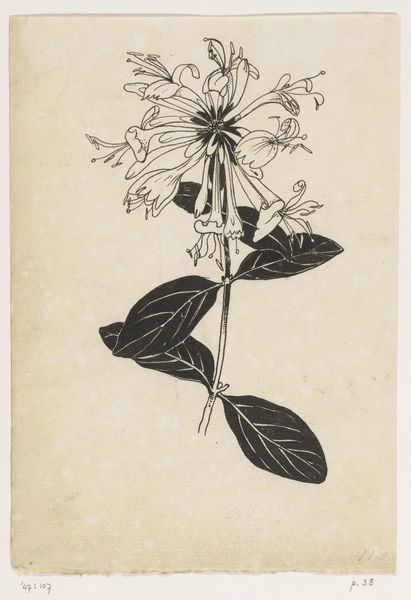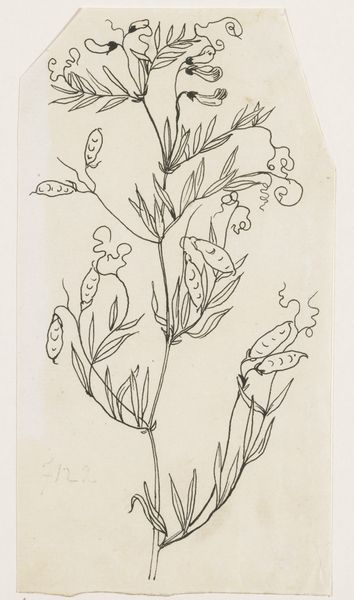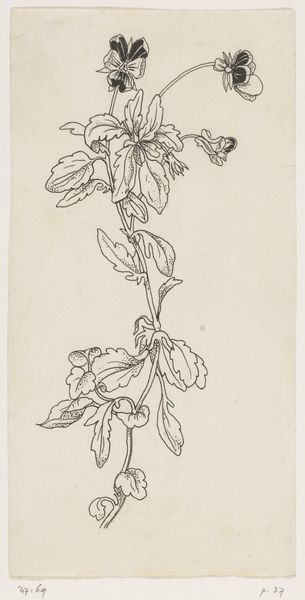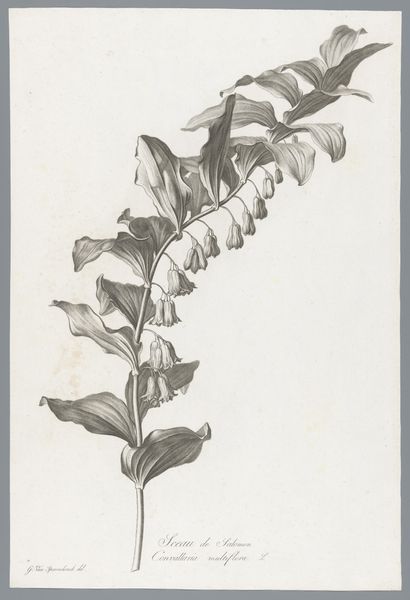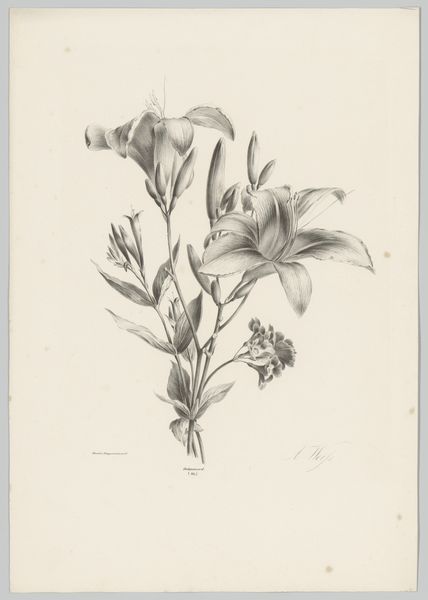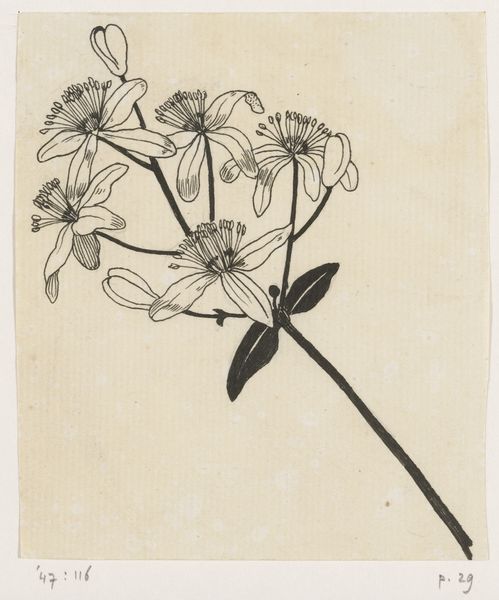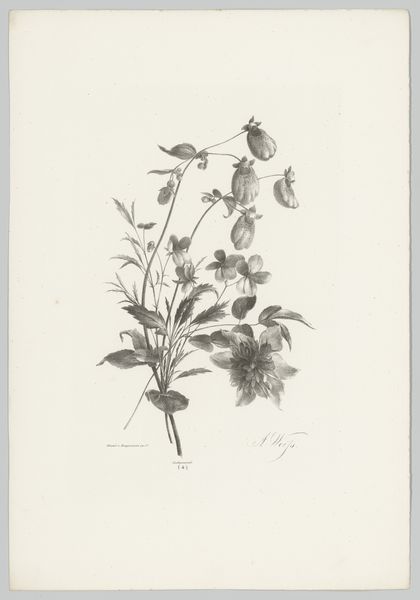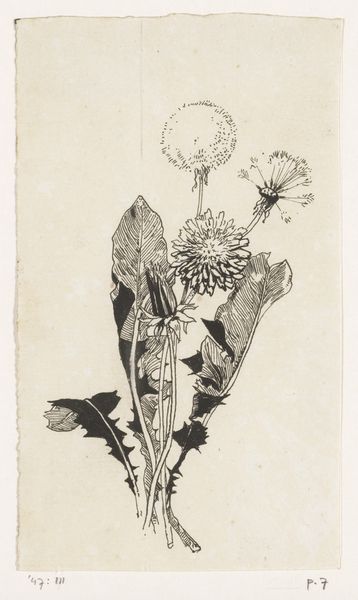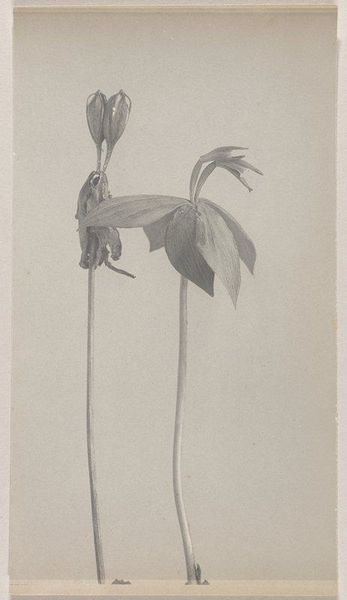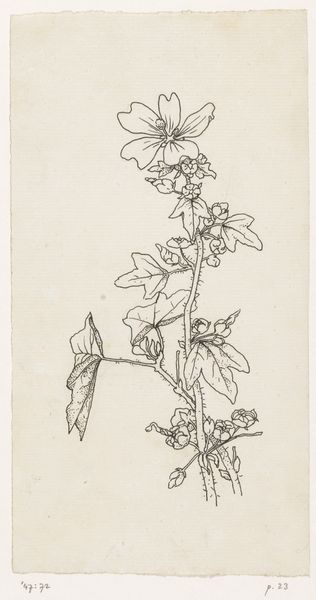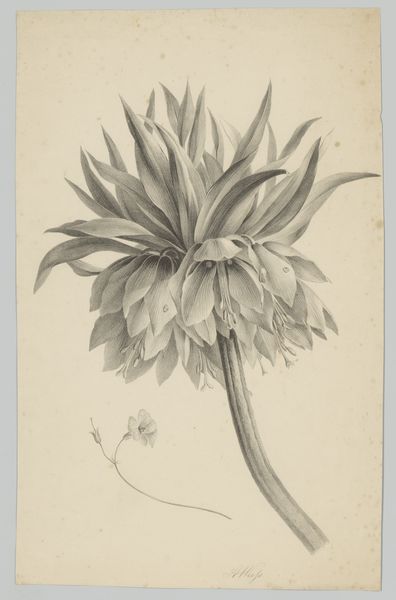
drawing, print, pencil, engraving
#
drawing
# print
#
pencil sketch
#
pencil
#
engraving
#
realism
Dimensions: height 200 mm, width 130 mm
Copyright: Rijks Museum: Open Domain
Curator: Here we have Maria Geertruida de Goeje-Barbiers' "Tak met bloemen", or "Branch with Flowers", a delicate botanical study made sometime between 1811 and 1849. It appears to be rendered in pencil and engraving. Editor: My first thought is stillness. It’s the quiet elegance of scientific observation, like pausing to really understand a single element of a vast system. Curator: Precisely. The single sprig focuses our attention. The image evokes the 19th-century obsession with cataloging and understanding the natural world through detailed representation, almost a hunger to capture the exotic in a time of intense colonial expansion. Do you notice the slight numbering at the top of the image? Editor: Yes, a tiny "7." So, it's part of a larger collection or series, perhaps documenting flora for scientific or educational purposes? I’m struck by the technical skill and almost obsessive detail in the leaves. Curator: The engraving gives a dimensionality, a subtle layering that softens what could be quite a rigid study. We can consider it as the imprint of exploration—these kinds of meticulous botanical illustrations reflect an age when claiming knowledge of the world was also a way to lay claim to it materially. Editor: I think too about who would be seeing these images. For many, they would offer one of the only available visual records of lands and nature so removed from their lives. Yet this ‘realistic’ representation flattens complexities, stripping a plant of its intricate ecological and cultural context. Curator: Well put! These images played a role in constructing a very specific, European, understanding of the world. There’s so much captured in the act of this kind of controlled looking. Editor: Reflecting on this work, I find it's a small visual reminder of how intertwined art, science, and power have always been, subtly shaping what we believe and how we see. Curator: For me, the enduring allure resides in its meticulous and focused gaze; through the plant’s symbolic presence we can examine larger truths about a shared world, which is as precious now as it was then.
Comments
No comments
Be the first to comment and join the conversation on the ultimate creative platform.
